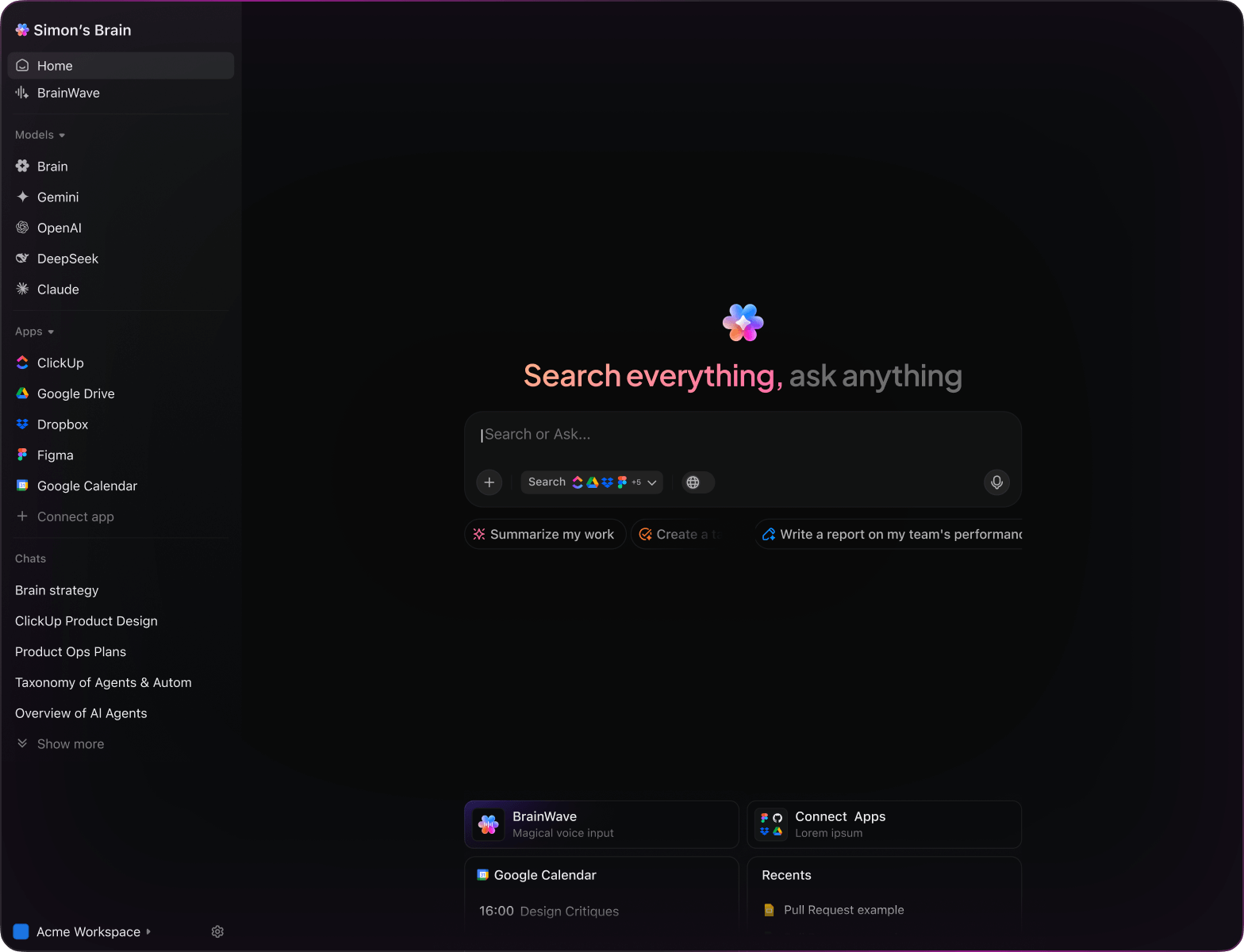AI Project Planning
Top AI Prompts for Crafting Detailed Project Plans
Build comprehensive project roadmaps, organize tasks effortlessly, and elevate your planning process with ClickUp Brain.
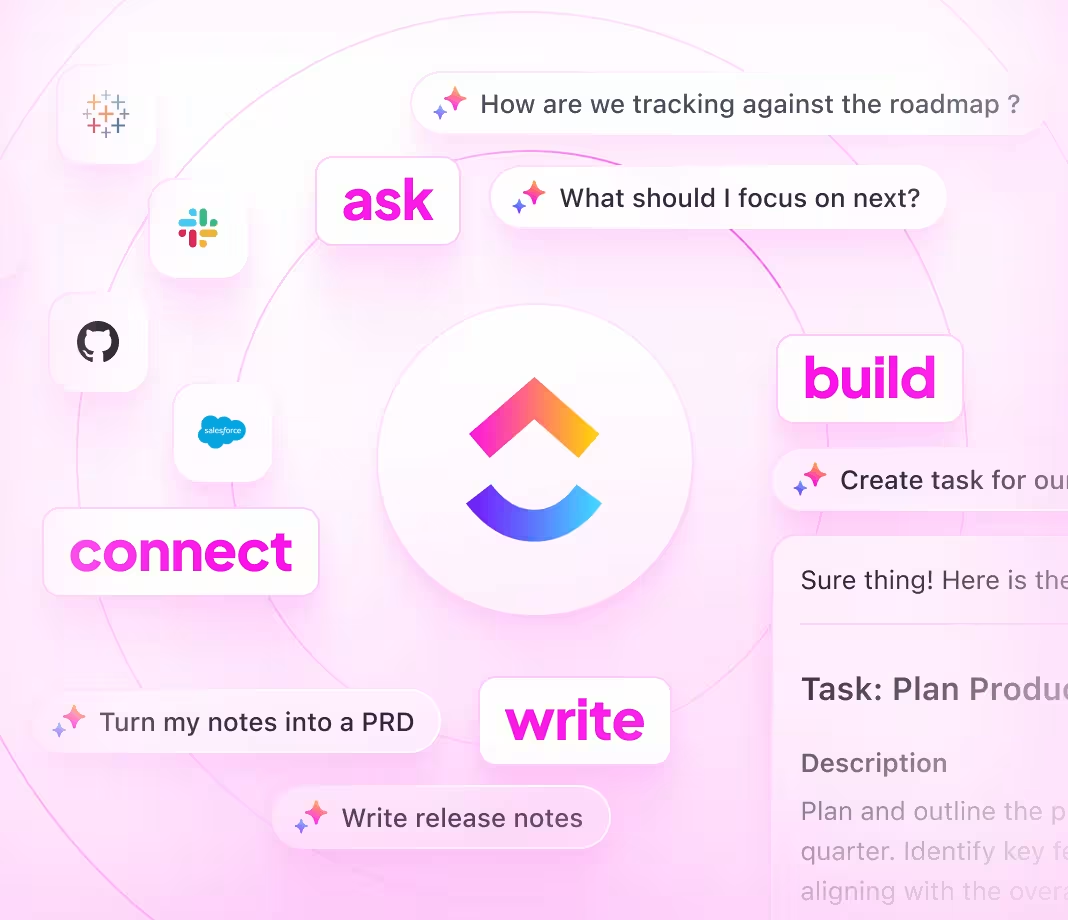
Trusted by the world’s leading businesses
AI in Project Planning
How AI Prompts Elevate Project Planning with ClickUp Brain
Crafting detailed project plans goes beyond setting deadlines—it requires aligning goals, resources, and workflows seamlessly.
From defining objectives to mapping timelines, assigning tasks, and tracking progress, comprehensive project planning involves juggling numerous elements—and countless updates and revisions. This is where AI prompts prove invaluable.
Teams rely on AI to:
- Quickly identify key milestones and dependencies
- Generate detailed task lists and resource allocations from brief inputs
- Extract insights from project documents and meeting notes
- Transform scattered ideas into clear, prioritized action plans
Integrated into daily tools like docs, whiteboards, and task managers, AI in ClickUp Brain acts as a proactive partner, converting your project concepts into structured, executable plans.
Comparing ClickUp Brain with Conventional Solutions
Why ClickUp Brain Stands Apart
ClickUp Brain integrates seamlessly, understands your context deeply, and empowers you to focus on execution instead of explanation.
Conventional AI Assistants
- Constantly toggling between multiple apps to collect info
- Repeating your objectives with every query
- Receiving generic, irrelevant feedback
- Hunting through numerous platforms to locate a single document
- Interacting with AI that only processes input without insight
- Manually switching among different AI engines
- Merely an add-on in your browser
ClickUp Brain
- Instantly accesses your tasks, documents, and team communications
- Retains your project history and objectives
- Delivers context-aware, practical guidance
- Provides unified search across your entire workspace
- Supports voice commands with Talk to Text
- Automatically selects the optimal AI model: GPT, Claude, Gemini
- Available as a native app for Mac & Windows optimized for performance
Project Planning Prompts
15 Essential AI Prompts for Detailed Project Plans
Simplify project planning—organize, strategize, and execute with precision.

List 5 strategic approaches for launching a new software product, based on the ‘Q3 Launch Strategy’ document.
ClickUp Brain Behavior: Analyzes the linked document to extract key strategies and suggests actionable planning directions.

What project management methodologies are trending among tech startups under $10M revenue?
ClickUp Brain Behavior: Gathers insights from internal market research; Brain Max can supplement with relevant external data if accessible.

Create a project scope statement for a mobile app development project, referencing Agile guidelines and previous project notes.
ClickUp Brain Behavior: Extracts relevant details from linked documents to compose a clear, structured scope statement.

Summarize risk mitigation strategies from ‘Project Alpha’ and ‘Project Beta’ plans using our risk assessment files.
ClickUp Brain Behavior: Pulls data from internal documents and delivers a concise comparison of risk approaches.

Identify effective resource allocation methods used in recent cross-functional projects, referencing team reports and resource logs.
ClickUp Brain Behavior: Reviews internal documents to highlight common techniques and their outcomes.

From the ‘QA Process Overview’ document, create a detailed checklist for quality assurance tasks.
ClickUp Brain Behavior: Extracts key QA steps and formats them into an actionable checklist within a task or document.

Identify 3 popular communication platforms used by remote teams post-2023, based on survey and usage data.
ClickUp Brain Behavior: Analyzes linked research and feedback to pinpoint common communication preferences.

From the ‘User Feedback Q2’ report, summarize main user requests and pain points related to project management tools.
ClickUp Brain Behavior: Reads survey data to extract recurring themes and suggestions.

Craft concise and welcoming onboarding messages for new team members, using tone guidelines from ‘TeamVoice.pdf’.
ClickUp Brain Behavior: Adapts style references to generate friendly and clear onboarding text variations.

Outline key updates in project compliance regulations for 2024 and their impact on planning workflows.
ClickUp Brain Behavior: Reviews compliance documents and summarizes relevant changes affecting project management.

Develop placement and formatting standards for milestone tracking dashboards, referencing internal reporting protocols.
ClickUp Brain Behavior: Extracts best practices and formatting rules from internal documents to create a guideline checklist.

Build a comprehensive risk assessment checklist using ‘Risk Management 2024’ PDFs and past project files.
ClickUp Brain Behavior: Identifies key risk factors and organizes them into categorized tasks for easy tracking.

Analyze budget planning and control methods used in ‘Project X’, ‘Project Y’, and ‘Project Z’ from financial reports.
ClickUp Brain Behavior: Summarizes financial management strategies into a clear, comparative format.

What new features and trends have appeared in project collaboration software since 2023?
ClickUp Brain Behavior: Synthesizes insights from market research, product updates, and user feedback.

Extract and prioritize usability concerns reported in client feedback for recent projects, focusing on interface and workflow challenges.
ClickUp Brain Behavior: Analyzes survey responses and support tickets to highlight key problem areas.
Craft Project Plans Effortlessly with ClickUp Brain
Cut down on revisions, unify your team, and produce superior plans using AI-driven workflows.





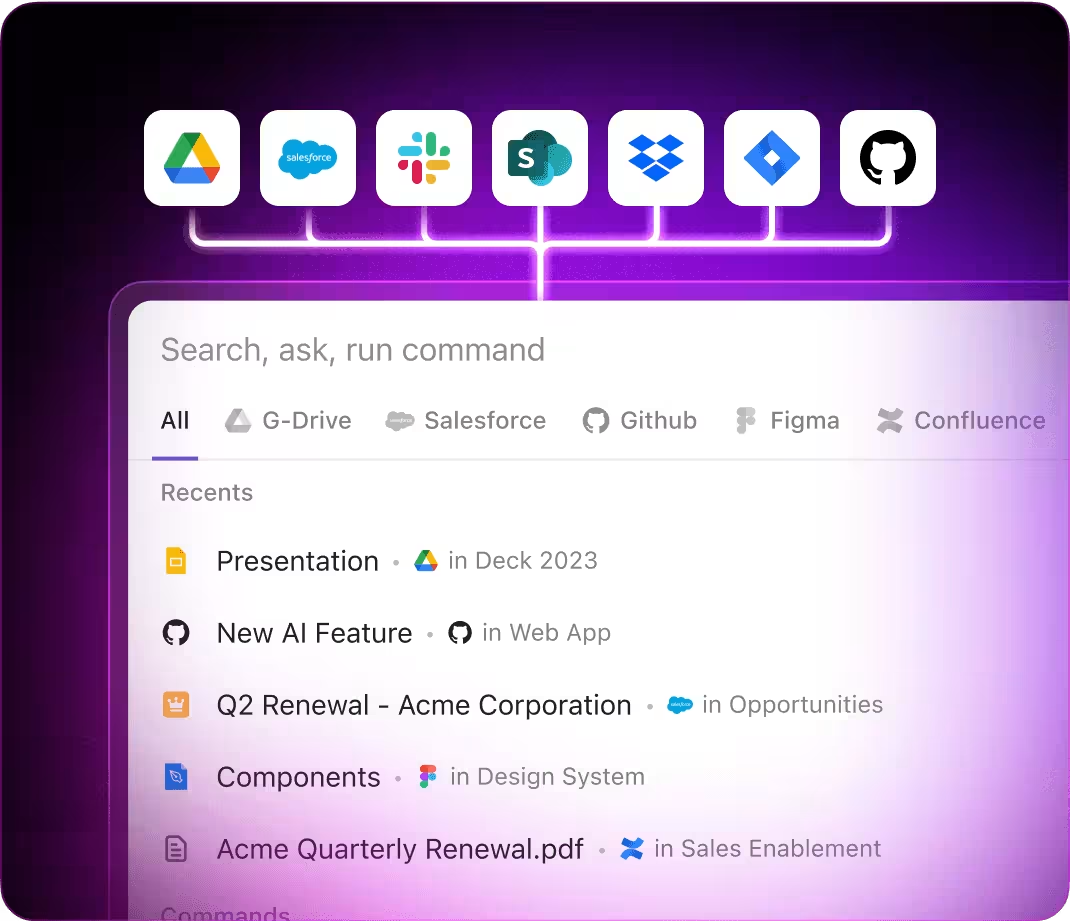
LLMs vs. Workflow Intelligence: How ClickUp Brain Shapes Project Plans
Discover How ChatGPT, Gemini, Perplexity, and ClickUp Brain Tackle Project Planning Challenges
ChatGPT Project Planning Prompts
- Outline a 5-step project plan focusing on resource allocation and timeline management.
- Compose stakeholder communication drafts emphasizing project milestones and risks.
- Suggest three alternative task breakdown structures for a software development project.
- Develop a phased rollout plan for a new product launch with key deliverables.
- Summarize lessons learned from previous projects to inform current planning efforts.
Gemini Planning Prompts
- Propose three workflow diagrams for cross-functional team collaboration.
- Generate innovative risk mitigation strategies tailored for complex projects.
- Create a visual mood board description for project kickoff themes and team culture.
- Recommend task prioritization methods for a multi-phase marketing campaign.
- Build a comparative table of project management tools highlighting features and integrations.
Perplexity Planning Prompts
- Identify five best practices for remote project team coordination and rank by effectiveness.
- Compare agile and waterfall methodologies focusing on scalability and adaptability.
- Summarize emerging trends in project management software adoption rates.
- List five innovative resource allocation techniques and evaluate their practicality.
- Analyze past project failures and extract top three corrective actions for future plans.
ClickUp Brain Planning Prompts
- Transform meeting transcripts into detailed project tasks with assigned owners and deadlines.
- Extract key milestones from project documents and generate a comprehensive timeline.
- Review annotated project diagrams and create a checklist for quality assurance reviews.
- Compile action items from cross-departmental discussions, prioritizing by impact and urgency.
- Summarize client feedback sessions and produce targeted tasks for design and development teams.
Why Choose ClickUp
Transform Initial Thoughts Into Complete Plans
- Quickly convert scattered notes into polished project outlines.
- Generate innovative strategies by referencing previous project successes.
- Build custom templates that accelerate planning for future initiatives.
Brain Max Boost: Effortlessly access historical project data, team comments, and resource files to fuel your detailed planning process.
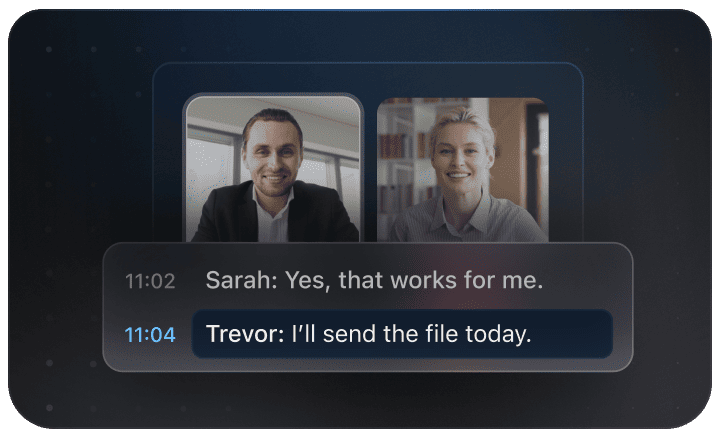
Why ClickUp Works
Accelerate Project Planning from Start to Finish
- Break down intricate project details into manageable tasks.
- Transform brainstorming sessions into structured, assignable items.
- Generate comprehensive project summaries and timelines automatically.
Brain Max Boost: Quickly access historical project plans, resource allocations, and milestone decisions across your portfolio.
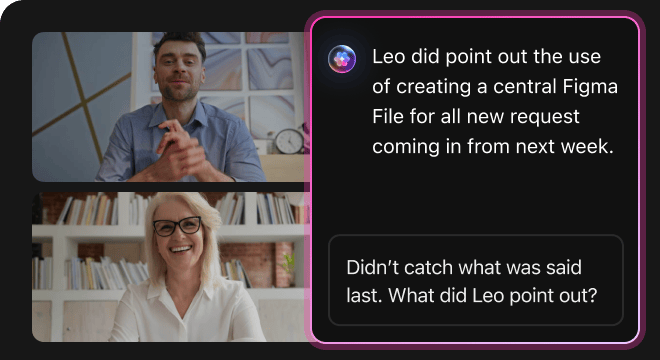
AI Advantages
Elevate Every Phase of Project Planning with AI Prompts
AI prompts accelerate brainstorming and enable comprehensive, actionable project plans.
Instantly Craft Robust Project Blueprints
Project managers explore diverse strategies quickly, enhance planning accuracy, and prevent delays caused by indecision.
Enhance Planning Accuracy and Confidence
Make informed choices, minimize risks, and develop plans that satisfy stakeholders and meet deadlines.
Identify Flaws Early to Avoid Setbacks
Detect potential issues before execution, improve plan quality, and reduce costly revisions later on.
Align Teams with Clear, Shared Objectives
Fosters communication, removes confusion, and accelerates consensus among cross-functional groups.
Drive Innovation in Project Approaches
Encourages creative solutions, supports adaptive planning, and keeps your projects competitive and forward-thinking.
Integrated AI Support Within ClickUp
Transforms AI insights into actionable steps that propel your project from concept to completion.
Speed Up Your Project Planning
Cut down mistakes, simplify collaboration, and generate smarter plans using AI support.





